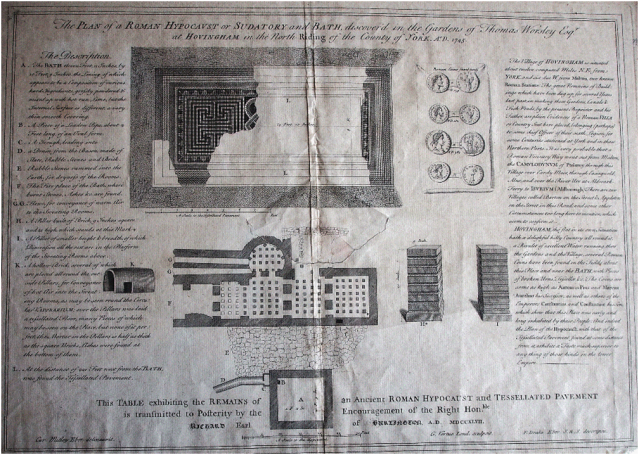|
|

University of Siena – Department of Historical Studies and Cultural Heritage
Landscape Archaeology and Remote Sensing LAB
|
Absence, invisibility and emptiness
in the interpretation of archaeological and landscape evidence
AN INTERNATIONAL SEMINAR AND DEBATE
22-24 APRIL 2013, CERTOSA DI PONTIGNANO, SIENA, ITALY
2½ days of discussion plus optional ½ day visit to Siena
Presentations and discussion in international English, with subsequent internet publication and continuing web-based discussion
Data collection and archaeological interpretation are complicated by apparent gaps in the evidence, whether in excavation, geophysical prospection, remote sensing, field survey, environmental analysis or artefact studies.
How can we tell whether such ‘gaps’ represents an absence of evidence, a failure to see evidence that is potentially available, the removal of evidence that was once present or a real gap in the activity or sequence that we are studying?
To what extent can we cope with such uncertainties when moving from data assembly to realistic archaeological interpretation?
Ambiguities of this kind are inherent in archaeology as a study based on the observation of material evidence. The seminar will explore these challenges through discussion between a dozen argumentative speakers and thirty or so interested students, teachers, researchers and practitioners, both at the initial seminar and in web-based discussion afterwards.
Subjects covered will include aspects of excavation, field survey, geophysical prospection, aerial survey, landscape interpretation, environmental reconstruction and the use of numismatic evidence.
If the seminar and its subsequent web-based discussion are successful consideration will be given to the promotion of similar events in future years.
INTRODUCTORY PRESENTATIONS
STEFANO CAMPANA (University of Siena)
Emptiness in Archaeology and the code of silence
JOHN CASEY (Independent archaeologist and numismatist)
When the money is missing: case studies in the constructive use of numismatic evidence
DAVE COWLEY (RCAHMS – Royal Commission on the Ancient and Historical Monuments of Scotland)
How big a gap? Some thoughts on scale, emptiness and bias
MARK EDMONDS (University of York)
Necessary spaces: real and imagined emptiness in Later Prehistory
ROSE FERRABY (University of Exeter)
Drawing out the gaps: Using images to explore absence in the landscape
DARJA GROSMAN (University of Ljubljana)
Hidden in stone, mud and water
ROG PALMER (freelance air photo interpreter)
Why are there holes in aerial data? And do we need a typology of gaps?
DOMINIC POWLESLAND (Landscape Research Centre)
Mind the Gap: emptiness and empty-heads in the study of past landscapes
JAMES RACKHAM (Independent environmental archaeologist & University of Nottingham)
So few pieces of the jigsaw! Just how good can our landscape and palaeoeconomic reconstructions be?
FRANK VERMUELEN (University of Ghent)
Surveying an Adriatic valley: from meaningless dots to meaningful gaps
EZRA ZUBROW (University of Buffalo)
Measuring Emptiness
PRELIMINARY EXPRESSIONS OF INTEREST ARE INVITED FROM INDIVIDUALS, IN WHATEVER FIELD OF ARCHAEOLOGICAL RESEARCH, WHO FEEL THAT THEY COULD CONTRIBUTE TO AND/OR BENEFIT FROM THIS KIND OF DISCUSSION.
Presence throughout the full 2½ days of the discussions is obligatory, at an all-in residential cost of about €150 per person (non-refundable deposit of €50, plus remainder on arrival).
Register your interest, please, by emailing campana@lapetlab.it as soon as possible, including a very brief statement of your past experience and reason for wanting to take part.
Further details and an application form will be available via the ArchaeoLandscapes website (www.archaeolandscapes.eu) in mid-February. Firm applications to be submitted by 1 March. Full inscription and payment of deposit by selected participants will be confirmed in mid-March.
Limited financial help, through the ArchaeoLandscapes Europe Project, will be available for those who cannot meet the full cost of attendance and travel from their own or other sources.
The seminar forms part of the ArchaeoLandscapes Europe Project within the Culture Programme of the European Union, managed in this case by the Roman-Germanic Commission of the German Archaeological Institute in Frankfurt.
The event is being organized by Stefano Campana of the Laboratory of Landscape Archaeology and Remote Sensing (LAP&T), University of Siena, in partnership with Chris Musson and Prof Dominic Powlesland of the Landscape Research Centre in the UK.
|
|















